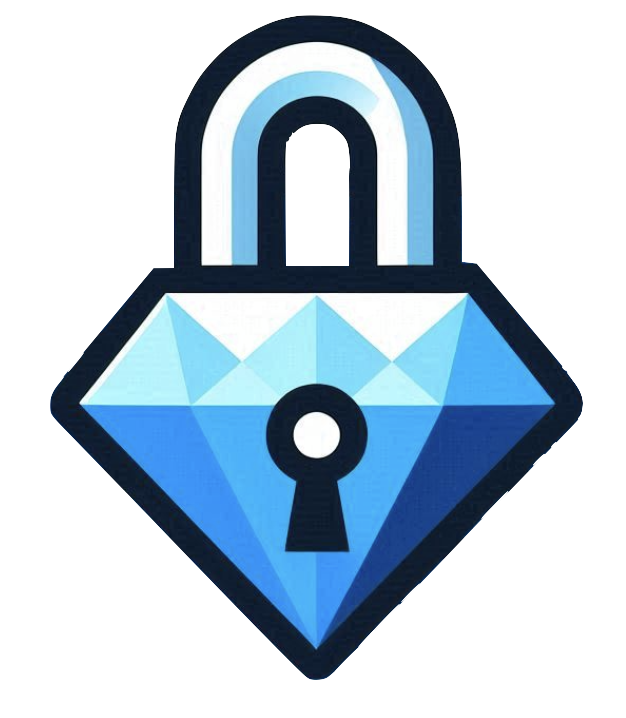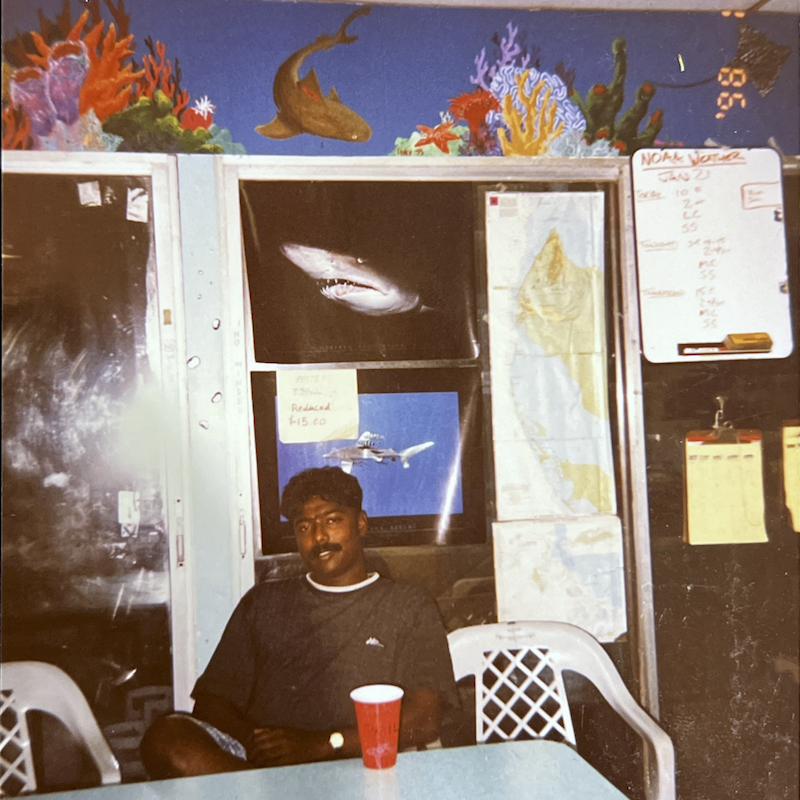Bimini Biological Field Station (BBFS), Bahamas
Shark Biologist / Researcher
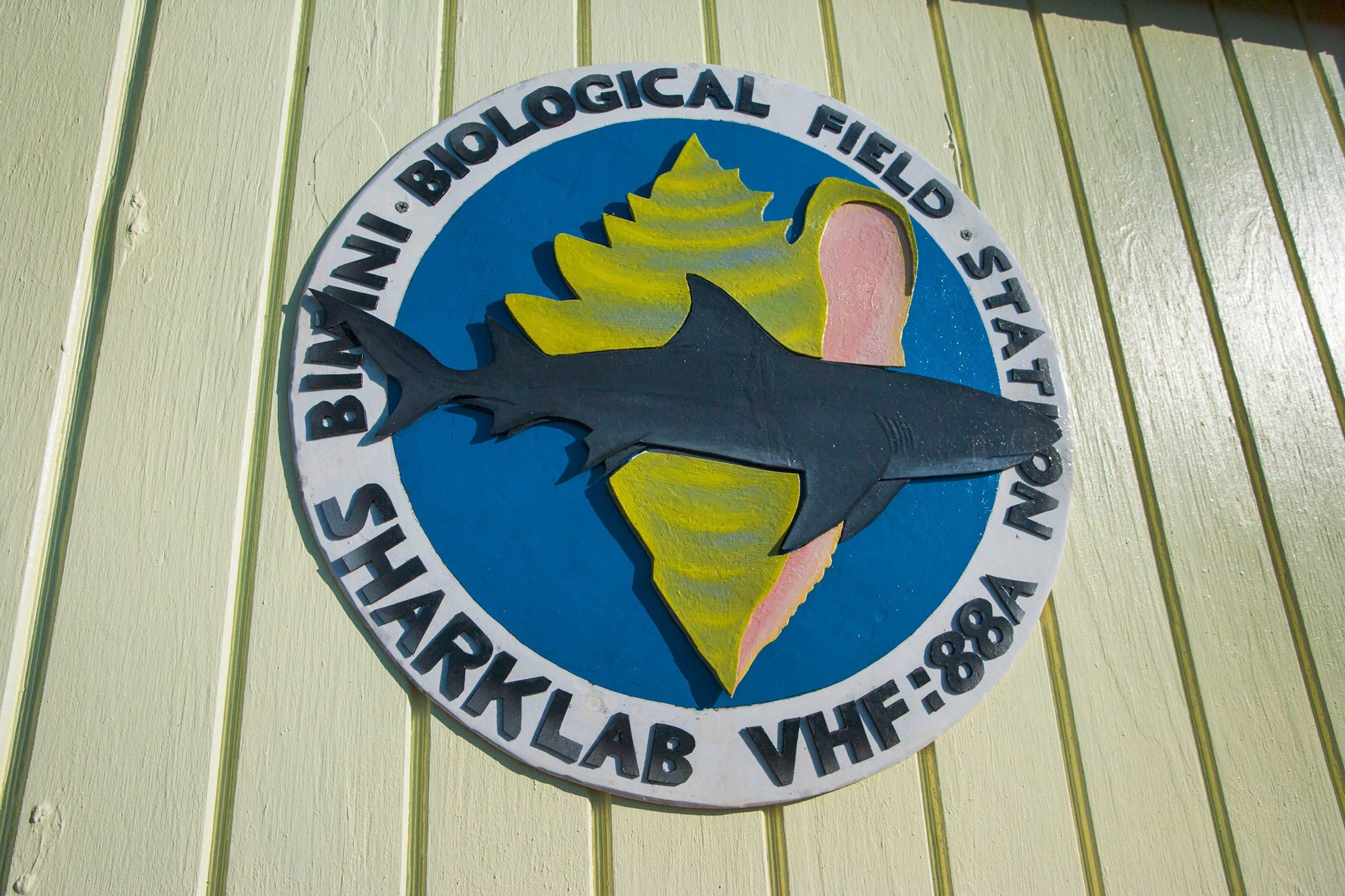
The start of my career - with Sharks at Sea!
In 1997, following my graduation from the University of Chennai with a Bachelor of Science in Zoology, I began my career in the field of Science and embarked on an unforgettable journey as a Shark Biologist/Researcher at the Bimini Biological Field Station. I was accompanied with my then girlfriend, now wife, Sangeetha Paul, also a fellow researcher in the program.
We studied under the mentorship and guidance of the renowned Dr. Samuel Gruber (“Doc”), founder of the American Elasmobranch Society and Professor at the University of Miami’s Rosenstiel School for Marine and Atmospheric Science.
Our research focused on the breeding patterns and homing and navigation behavior of Negaprion brevirostris (Lemon Sharks) in the Bimini waters. As part of our research, I have had some thrilling shark dives and learned about innovative telemetry techniques to map their movements, providing invaluable insights into these beautiful creatures, much before the world of AI or Computer Vision / LIDAR etc.
Snapshots
Bimini Islands Research Gallery
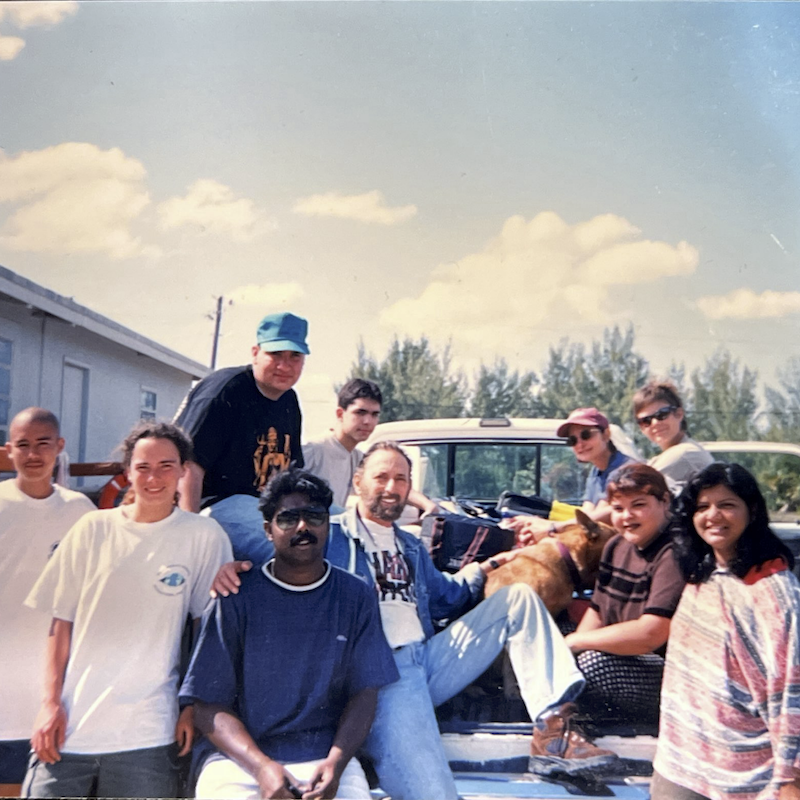
Shark Research Team (1997)
Sangeetha Paul (far right) and Mano Paul next to Dr. Samuel Gruber (“Doc”)
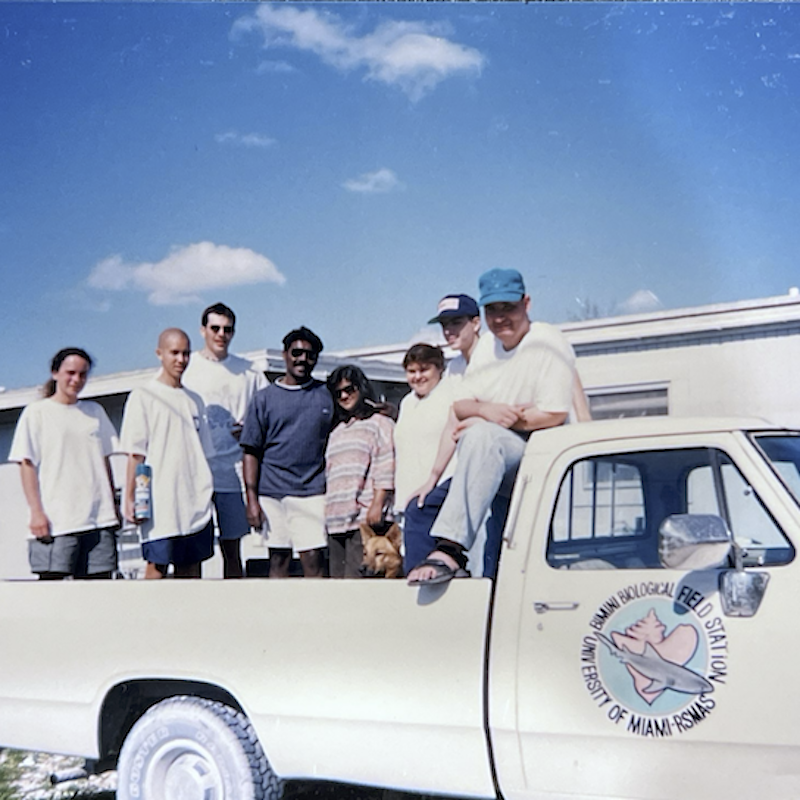
Shark Research Team on Truck
Team on the truck that transported us from the lab to the sea!
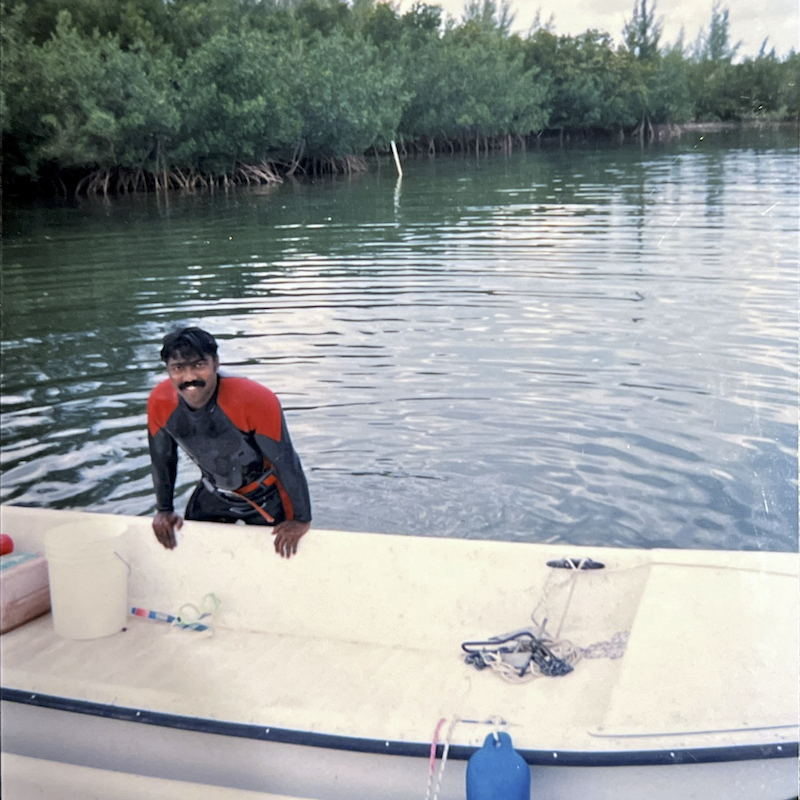
Shark Research Skiff
Our skiffs that were used in conducting research at sea!
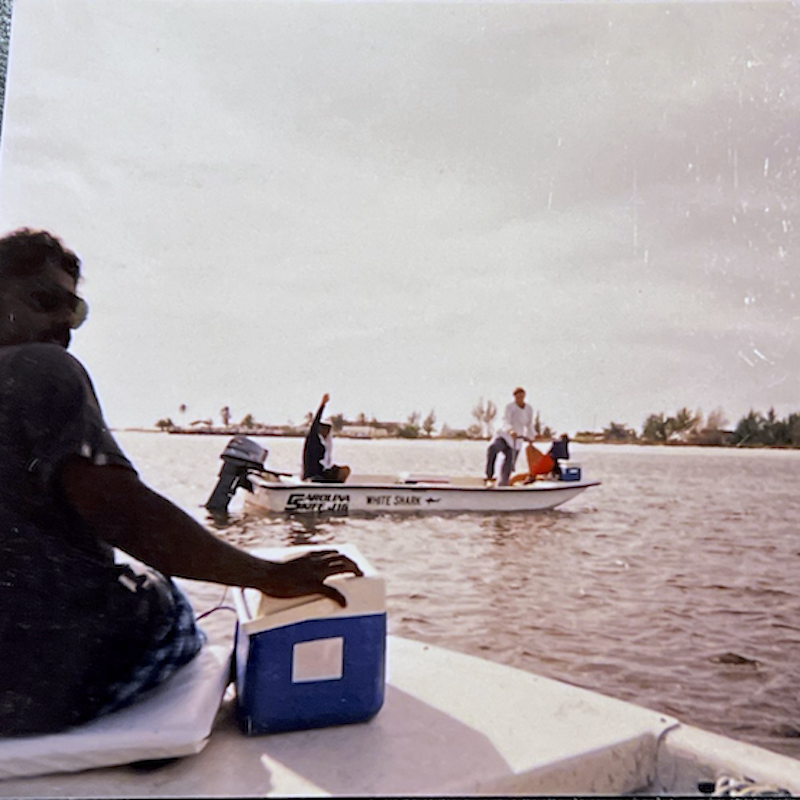
Research at Sea
During one of daily research trips following tagged sharks and plotting navigational patterns.
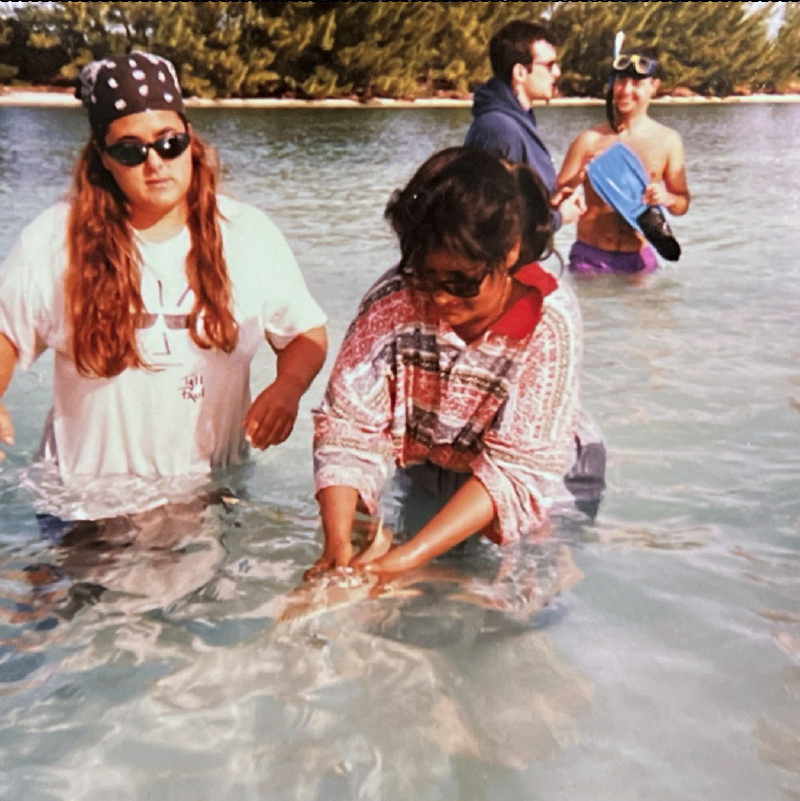
Tagging Lemon shark pups
Researcher Sangeetha taking a lemon shark pup to the pen to get it ready for tagging and release.
Schooled by Sharks
From Sharks at sea to Sharks (Hackers) on Land!
I’ve been blessed to have career that took me from the ocean depth to the inside of boardrooms – from studying sharks at sea to sharks (hackers) on land.
Some Lessons Learned
- The Most Dangerous Shark: Although Steven Spielberg and his Jaws movie crew may disagree), a bull shark is more dangerous than a Great White because it can move into freshwater ecosystems where it is likely to encounter more humans. A hacker who can navigate diverse ecosystems is thus far more dangerous.
- Always keep Swimming/Moving: A shark needs to oxygenate its gills and thus has to keep swimming to stay alive. Security programs need to be continuous adapting.
- 360 degree Vision: Just as a hammerhead has a 360 degree field of view, technology programs need to be comprehensive in its compliance and controls posture.
Reflections
Curiosity, Caution, and Creativity
During my time in the Bimini Islands, sharks taught me the value of CURIOSITY, which is an essential trait for any researcher. Working in the field of cybersecurity, on the other hand, instilled a sense of CAUTION, teaching me that we ought to be always be vigilant in the protection of our assets and customer trust. Technology has been my canvas for CREATIVITY, allowing me to blend these lessons into innovative solutions.
